For long holiday tourism has been in the grip of economic thinking and sociological research. On this webpage a more balanced view is maintained on the focal centre of tourists' activities: tourists themselves and their encounter with their holiday destination. Tourists take what is given to them and then turn it into their own ends; it is these ends what is of our primary interest and more than 25 articles on this site are about just that: the tourists' tourism.
Under the heading "Tourism" a new article has been added on Climate Change (July, 2020)
and also under the heading "Tourism" I have added a new article about Phenomenology and Tourism (Feb. 2020).
NEW AGE TOURISM
All rights reserved. Complete or partial reproduction is prohibited without the permission of Marinus Gisolf and without mentioning the source.
Introduction
As part of my studies in the field of the reflexive approach to tourism, in this article I shall give some interpretations of New Age tourism and related tourism activities such as wellness tourism and I shall also show how these phenomena give us an indication of tourism developments to come.
The New Age movement is a Western spiritual or metaphysical and self-help movement that started to take hold during the twentieth century. Followers or practitioners may draw on a variety of different spiritual or religious traditions for guidance, but what they generally have in common is a holistic worldview with an emphasis on the interrelatedness and unification of the Mind, Body, and Spirit. New Agers tend to focus holistically on Self, thus it is also called the human potential movement (q40, q57). When this self-development and realization are turned into a leisure activity we can call it New Age Tourism. It is more a means than an end in itself, thus the essence of this type of tourism is in the exploration of alternative culture as a leisure activity. It is a manifestation of identity as well as sustainable tourism (q92).
Many cultural and alternative religious movements from the 1960s onward have been considered New Age, such as the flower power movement, “Ban the Bomb”, mysticism, Indian meditation, yoga and so on. The common denominator is in the way that New Age people attempt to find new ways of living. That is, their goal is self-realization, liberation and fulfillment, and the means to achieve that end is a socially responsible, ecological approach that facilitates the actualization of both the individual and the wider community’s potential: the desire to transform self and society.
Postmodernism
Profound changes in the way that place and time are experienced as a result of accelerated globalization have led to a new questioning of identity, the self and the place people take in this world (q36). It refers to the trend that people’s strong feelings of once having been tied to a certain place and culture are now slowly giving way to being tied to a certain time or era (q50).
Postmodernism has been most noticeable among Western societies and has led to what is called cultural pluralism, which in essence means that people have started to lose their own feelings of belonging by embracing many expressions of different cultures in one way or another (q50). Nationality, ethnicity, gender or class are no longer cornerstones people can build their identity on. This in turn has resulted in an egocentric preoccupation with the self, with consumerist behaviour as one example (q62). Having lost their sense of “belonging to” a certain place or culture, people also tend to live more superficially, preoccupied with their own image – seeing only images and less objective authenticity around them (q92).
There is a generalized loss of belief in modern society, technology and science – as these have led to the exploitation and destruction of nature and to disenchantment rather than happiness (q60). Most people living in postmodern societies have not only lost the links with their cultural backgrounds, but also with authenticity and nature. They seem to live in a world that is increasingly dominated by images and representations, rather than by real and realist objects and phenomena. The boundaries between true and false, or between fact and fiction seem to have blurred, while consumption and instant gratification have become leading factors (q60).
There is no better way to demonstrate one of the most visible consequences of this than to point to the places in this world that have no cultural-historical ties or any fixed identity at all (q22). They are also called non-places and are part of a phenomenon that started to spread around the world from the 1970s on. Often they are seen as beacons for postmodern globalization and include: international airports, shopping malls and international chain hotels. These are designed and built so that anyone from any culture can feel comfortable and have something they can recognize; places that are inseparably linked to consumption and trade and have an air of luxuriousness; places where people – tourists among them – will have little sensory intake and will be left with hardly any memories, other than their encounters with fellow human beings, although even these seem to be superficial.
The interesting aspect of these kinds of places is that they exist in complete contrast to previous modern times. Gone are the cultural and historical links to places, a particular identity, typical colours and smells, people’s customs, the connection with the earth, the meaning of the sun and moon, and the more profound beliefs that go with this. For example, in earlier days railway stations were real architectural landmarks worth visiting in their own right, while today’s (post)modern stations are indistinguishable steel and glass structures, purposely lacking any kind of authenticity.
We can mention many more examples, such as the displacement of small local shops by supermarkets and shopping malls. Again, the latter seem to look alike regardless of whether you are in Singapore, Buenos Aires or Moscow. International food is another example, whereby the hamburger (USA), pizzas and pasta dishes (Italy), croissants (France), hot dogs (the sausages were a German idea), Mexican tacos and Japanese sushi can be found in most countries anywhere on the globe, although these dishes retain little of their original smells and flavours having been adapted to everybody’s taste.
The widespread use of all types of drugs and stimulants is another phenomenon that has paralleled the above-mentioned trends and it is closely related to the level people are losing touch with reality. The ever more popular tattoos and piercings also seem to be related to the identity problem. The Internet has provided many people with long hours of virtual entertainment, social networks and complicated games played with people all over the globe, where reality and the virtual, or facts and fiction, seem to be overlapping (q92).
Although many people with a direct interest in New Age ideas also embrace many aspects of post-modernism, there is one point where New Age trends diverge quite markedly from postmodern thinking: there is a distinct belief in nature as an independent reality (New Age), while in post-modernism it is seen simply as a representation (q32, q92). It seems that New Age people accept nature, as it provides them with a framework to think about life, the world and what it means to be a human being. Nature for them seems to possess a reality independent of its representation, image or conception, a place where one feels one can belong (q92).
Tourism and New Agers
The loss of a feeling of identity amid un-authentic people, cultural pluralism, and the compression of space and time not leaving time to think have created uncertainty about the present day and the future. However, at the same time this has prompted a search for historical roots, an idealistic authenticity, longer lasting values or an eternal truth, often drawing explicitly upon the spiritual traditions of the East (q60, q88, q120). It is this postmodern nostalgia that has also pushed some people to the re-invention or re-representation of former religions or cultures (Vikings, Mayas), natural healing methods (acupuncture, aromatherapy and herbal medicine, etc.), organic agriculture and self-sufficiency. At the same time, disenchantment with previous modern times has led to a continued push for alternative styles of living.
In New Age tourism the idea is the experience itself being experienced: people draw upon their own inner feelings and emotions, while reality no longer dominates and rather seems to have been transformed into images. The way people feel about things, the images things represent or the ideas they carry give shape to new sets of experiences. This type of tourism is about tourists in their own identity, tourists exploring themselves as their own main tourist attraction.
Tourism has the potential to respond to these quests to know different cultures and alternative lifestyles. New Age tourism usually embraces some form of environmentalism, community values, constructive host-guest interactions and social responsibility. In this sense New Age tourism can be seen as a mix of identity tourism and sustainable tourism and it is definitely a backlash to existing mass tourism (q92).
Increasingly individualistic behaviour among tourists concerning the search for self and self-realisation and the role of nature and authenticity in this quest are all tendencies that make the tourist the centre of attention and also involve the need to accept him as a full-fledged partner in tourism, since it is the tourist himself who has started to develop a new interest and view on tourism.
With New Age tourism we can see this clear inclination to all that is natural, including clothing or musical instruments made of natural materials and most New Age tourism destinations are located in rural areas close to nature parks or protected areas. New Age tourism in this sense has very much to do with the search for nature in the widest sense of the concept.
Infrastructure
A New Age tourism destination offers lodging and food – generally in a simple and straight forward way. The food is often homegrown and may be vegetarian. Apart from lodging, the site may offer:
- Learning skills, such as wood turning, ceramics, candle making, weaving etc.
- Aesthetic development: art, drama or music;
- Agricultural learning, through courses and direct work involving synergy and permaculture techniques among others;
- Formal scholarly learning, including courses by spiritual and intellectual “gurus”;
- Experiential and personalized self-development: courses on meditation, personal relationships, family constellations or self knowledge;
- Alternative approaches to health and wellness: homeopathy, acupuncture, hypnotherapy, Shiatsu massage, Ayurveda, Yoga, Reiki etc.;
- A country style environment apt for feeling the link with the earth and nature.
This can be considered a form of tourism because of their own free will people travel to an area that is completely different from their home environment and stay there for at least one night. There are planned attractions for visitors (tourists) at these destinations, such as courses that are given, working in the field or any other activity as described above. Furthermore, tourists have particular motivations and needs that in turn generate certain expectations. Tourists have a series of experiences stemming from side and shared impsources, and finally they will evaluate these experiences. The authenticity involved is mainly activity-related (existentialist). Finally, tourists have an economic input, either monetary or by voluntary labour.
With most New Age destinations financial gain does not seem to be particularly important, with education and the transmission of alternative ideology being the primary concern. The financial part seems to be viewed as a way to facilitate an alternative lifestyle and culture, and in this sense New Age tourism differs from traditional forms of tourism. It should also be stressed that this type of tourism is not related in any way to wealth or poverty. People from all walks of life may participate and some New Age destinations may be suitable for (poor) students, drugs addicts wanting to change their lives, or people who simply do not care for material wealth; on the other hand, there are also centers where costs may be quite steep indeed. As is the case with other forms of sustainable and responsible tourism, the issue of tourists with a lot or little money does not change any argument.
Among the activities available at what I call New Age destinations, community life and living in a commune form the backbone, where the principles of alternative lifestyles can be realized. It is interesting to note that in New Age centers I have visited, the tendency has been to turn the “normal” daily city life routine into an especially meaningful activity, while the exotic is turned into something routine. Most visitors to New Age destinations will have to help with washing up or gardening as part of a community effort and these actions are made attractive on the basis of their self-development potential and for facilitating a new relationship with the environment. At the same time the exotic is introduced through foreign artifacts, native musical instruments, exotic food or indigenous dresses for example. Quite often one can find a mix of Buddhist, Hindu or Mayan influences at the same time.
Gardening makes up an important part of daily activities at New Age centres, concentrating on synergic gardening and permaculture on one hand, while stressing the link with the earth and healthy eating habits on the other. One example is an upward herb spiral, whereby the herbs sown in the upper parts need less water than the ones lower down and some herbs are planted on either the north or south side depending on the amount of light they need.
Projects are often started or continued as part of examining human relationships with the landscape, such as building a pond using clay and cow manure to make it watertight. Projects may be left unfinished after a while, since what is important here is the action of doing the project in the first place rather than the final result. By executing such a project one’s ecological sensitivity is tickled and the experience of working the earth and using old survival techniques may inspire many people.
Every New Age centre seems to have its own way of demonstrating its uniqueness to its participants, which may range from community chanting and various rituals to simply giving hugs to each other in the morning. The feeling of belonging to a community is strong, but what holds it together is the interest of the participants (including tourists) in self-realization and their general focus on Self as the common denominator. Somehow there seems to be a common goal, although the particulars may be different for each person. The feeling of “belonging to” is an important ingredient, but never an end result. Tourism in this sense is a means and not an end.
The relationship between New Age centres and their direct social environment provides us with a series of interesting observations as a result of the inherent nature of New Agers’ self-realization, liberation, fulfillment and the drive to transform self and society. At the farm VerdEnergia Pacifica in Costa Rica, for example, they make stoves that burn (used) vegetable oil and distribute them among the poorer population in the countryside as cheap alternative for cooking as part of their sustainable development initiatives.
A completele different case is, since most New Age destinations are located in rural areas, local populations may not yet have been influenced by postmodern tendencies, living their ways of life as was the case in modern times or before. This includes more fundamentalist Christian beliefs and anyone deviating from these views may quickly be branded anti-religious or even a dangerous outsider. In this sense I have noted that most participants and leaders of New Age destinations have their roots in city life and have been affected by postmodernism trends, which explains this gap in social contact with local rural populations. However, this statement cannot be generalized due to a lack of scientific research.
Wellness Tourism
It may be useful to look at a tourism phenomenon that dovetails quite neatly with postmodern trends, but is different from New Age tourism. A brochure published by the German National Tourism Board on wellness holidays starts like this (q37): “Are you looking for an individual wellness experience? Yoga in Allgäu, thalasso on the Baltic Sea, excursions in the Black Forest or bicycle tours around the lakes of Mecklenburg? Would you like to play golf, enjoy a luxurious hot-stone massage and a wonderful vital gourmet dinner?” Apart from these offerings most wellness centres stress that stays at their centres have revitalizing powers and are good places for people to unwind and “get away from it all”. The issue of personal health forms an important element in combination with relaxation and experiencing a natural environment. Most wellness centres are luxurious and quite expensive and apart from lodging, activities and spas or saunas, they may provide dietary experts, physiotherapists, naturopaths or trainers to help tourists ensure they put “their work-life balance back on track”.
Wellness tourism is foremost about physical wellbeing and the application of yoga is mostly practiced as a means of relaxation and reaching a state of peace and quiet with one’s own body. Most hotels catering to the wellness tourist seem to have a clear client-personnel distinction with all staff trained to make sure tourists feel as comfortable as possible. Comfort is an important ingredient, not to mention beauty treatments, steam rooms, jacuzzis and a general ambiance exuding luxuriousness and relaxation.
In characterizing the range of tourist lifestyles, at one end of the scale we find tourists who are individualists, like to make their own itineraries, travel at their own pace, do not want to visit typical tourist highlights, and have a keen social interest in other cultures, as well as in personal challenges in socially or physically extreme situations (q52). At the other end of the scale we find tourists who like to travel with no problems or hassle, seek complete relaxation, enjoy visiting famous tourist highlights, and their main concern regards their own corporal wellness (sun-tanning, spas or plastic surgery) with little interest in local social contacts or culture. The first group is often called the allocentric tourist’ lifestyle group and the second the psycho-centric one. For more details on tourist lifestyles, please read the corresponding page on this site. Allocentric tourist lifestyles concern more spiritual matters and therefore they are more closely related to New Age tourism, while psycho-centric ones are about an attitude directed at the body rather than the mind and refer to wellness tourism among other kinds (e.g. simple beach holidays). Noteworthy differences are the social aspects, whereby community life is all important in New Age tourism, but in wellness tourism it is about couples or people travelling with their own friends; in New Age tourism the instructors or teachers share self-serve meals with participants, whereas wellness tourists are served individually and need not bother with the washing up afterwards. Along these lines there are many more differences and it should be clear that the two types of tourism are quite distinct, although they seem to have one thing in common: a focus on the self – one on a spiritual level and the other on a physical or corporal level.
Postmodern tourism trend setting
Postmodern tendencies have affected Western societies profoundly and can be noticed increasingly on other continents. Although these tendencies have propelled a growing interest in New Age as well as wellness tourism and especially in the twentyfirst century there has been a marked increase in both, they date from premodern times. Wellness tourism existed in the ninteenth century (e.g. spa resorts in France and Germany) and during the beginning of the twentieth century there were examples of projects along New Age lines. Wellness tourism has always had a certain clientele, partly because of the wide array of activities the term covers (medical tourism and aesthetic tourism being two examples). But throughout history there have always been societal pressures exerted on certain social classes to attend their personal wellbeing.
Life in a commune or New Age centre in general has not usually been considered a kind of tourism or have the voluntary work opportunities at these centres. Along with proliferation of New Age centres, there has also been a growing interest from a broader public leading to a wider acceptance. In turn it seems that New Age centres are effectively seeking openings through tourism or similar programmes and they want to be heard even on international level through associations and intensive use of the Internet. Tourism destinations have started to “borrow” elements from New Age tourism and some hotels are now incorporating spiritual elements into the services they offer, though with the important difference that whereas New Age people try to transform self and society, other tourism initiatives offer people support and help for surviving the postmodern world.
One important way to research a phenomenon such as tourism is by studying its extremes. In practice this means that at both ends of the tourist life style scale there are tendencies whereby tourists become increasingly more preoccupied with Self, identity, self-realisation, well-being and the search for alternatives. The sheer observation of individualist tourism increasing at both sides of the tourism life style scale at the same time shows us first of all that tourists are increasingly looking for their own way to go and under the influence of postmodern tendencies they seek a more independent role in tourism. One observation to be made is the tendency among tourists to mix various types of holidays: some days of wellness holiday alternating with some really adventurious tours, then a bit of culture, while not forgetting one’s Self through a Reiki course. Learning elements are more readily mixed with leisure elements for example. This observation coincides with postmodern tendencies, whereby many people today like to “channel-surf” the television, dipping in and out of different settings that capture their interest momentarily, regardless of whether or not the entire programme is watched.
Secondly, travel organisations must increasingly follow and study the tourists in order to meet the tourists’ needs and tourists will have to be accepted as partners in tourism, rather than simply offering them the usual range of tourism services. The strait-jacket of the sheer economic approach of the provider–product–client relation in tourism prevents a better understanding of postmodern tendencies in tourism.
Apart from evolving tourists’ participation patterns and the travel organisations’ obligation to act accordingly, the rise of New Age tourism highlights a third consequence: the changing role of authenticity in tourism. While during the second half of the twentieth century authenticity was still dominantly object related and what mattered was the fact that the object or phenomenon was absolutely real (such as the famous glacier Perito Moreno in Argentina for example), by the end of the twentieth century a shift from object to symbol related authenticity was evident, whereby it became important that the object or phenomenon generated an authentic experience with the tourists, regardless of whether or not the object was objectively authentic (Disney World is one example). In more recent times and most visible in New Age tourism we see a domination of activity related authenticity referring to a more existentialistic part of authenticity: what matters is the authenticity of tourists’ innerfeelings as an outcome of an activity while the authenticity of objects of phenomena do not longer count at all (by going fishing one experiences a feel of peace and quiet). This point highlights the more independent line tourists have started to follow concentrating more on what they feel and want to feel.
Obviously, the trends mentioned above favour sustainable tourism and sustainable development in general, where the main stakeholder – the tourist – has been left out of the debate so far. It is difficult to exercise sustainable development without sustainability-minded tourists and the tendencies as described above point to higher levels of tourists’ involvement.
New Age tourism should be recognized and although it represents only a small market niche that will remain so by the sheer nature of its modus operandi, its recent wider diffusion gives us an indication of tourism developments to come.
Some examples of New Age centres:
http://www.lacittadellaluce.org
Some theoretical arguments:
The principals of reflexivity in tourism: http://www.tourismtheories.org/?cat=121
For more information on authenticity: http://www.tourismtheories.org/?cat=49
For more on the tourism lifestyle scale: http://www.tourismtheories.org/?cat=104
For those working in tourism, students and scholars please remember that this website is not commercial and depend on voluntary contributions, small or symbolic as they may be, by pressing the DONATE button (PayPal system) at the bottom of this page.
All rights reserved. Complete or partial reproduction is prohibited without the permission of Marinus Gisolf and without mentioning the source
5 Responses to “NEW AGE TOURISM”
Leave a Reply
All rights reserved. Complete or partial reproduction is prohibited without the permission of Marinus Gisolf and without mentioning the source.

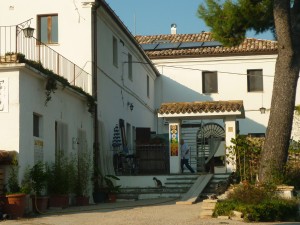

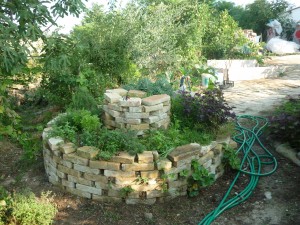
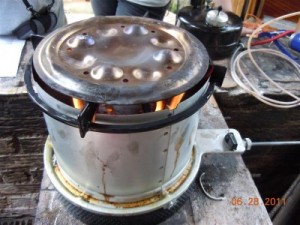
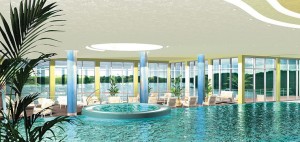
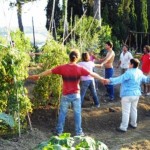
Marinus, it’s amazing how well you read why the new age market, the reason of New Age tourism’s existence and the marketing needs. We can only hope that those who take decisions on how to spend Costa Rica’s ICT marketing budget read up on your well explained issues. Thank you for sending me your article, I thought it was definitely an interesting read and we might be able to apply some of it to the marketing of our niche, Costa Rica real estate. As opposed to the average tourist and real estate buyer, the New Age client is definitely more motivated in today’s market to enjoy beautiful Costa Rica, which might soon become the next place for those looking to enjoy nature and retire in a nicer and cleaner environment. Costa Rica definitely has the potential to do so. Thank you!
Ivo Henfling
GoDutch Realty
Costa Rica
Hi Ivo,
Thanks for your comments – I shall pass it on to the ICT by next week, when I have finished the Spanish version.
Let us keep in touch,
Marinus
As you know I am employed by the indigenous people of Scandinavia – the Sámi – to develop Sámi tourism. We started our work by investigating what the Sámi stand for, want to be known for and what they want to do with tourism. Your article well reflects also the debate in Sámi tourism today. Ancient beliefs and cultural heritage is something generations of Sámi have been forced to abandon (but they kept it alive under cover!) and a new spiritual and ethnic awakening can be said to take place. To develop tourism in these times is tricky and I can see how New Age tourism could really clash with Sámi life as well as being the key to a respectful meeting visitor and host. Follow this link and you can see how we have tried to state how Sámi want tourism to be developed: http://www.visitsapmi.com/en/Articles/Tourism-and-Sustainability-/Sapmi-land-of-no-borders/
Hi Dan,
Thanks for your reply. The Sapmi project is a really impressive one and at the same time quite a challenge. Privately I shall comment on some interesting details . Regards – Marinus
Dear Marinus,
Thanks for calling my attention to this article. I am not a trained tourism expert. My experience about the tourism is twofold: behaving like a tourist and trying to attract the attention of people to Europe’s wilderness.
My experience however confirms what you wrote regarding authenticity. I shall say that experiencing wilderness is something which might become a more popular way of relaxing. It helps to recharge your battery, being away from your traditional life.
However I also wonder whether the need for authenticity is different for people living in urban and in rural areas. Wilderness sometimes is what surrounds you for a rural resident.
So you might want to write a next piece about how the different cultural and living background of people affects their behavour and interest as tourist.
We will certainly be in touch in the future.
BR, Zoltan